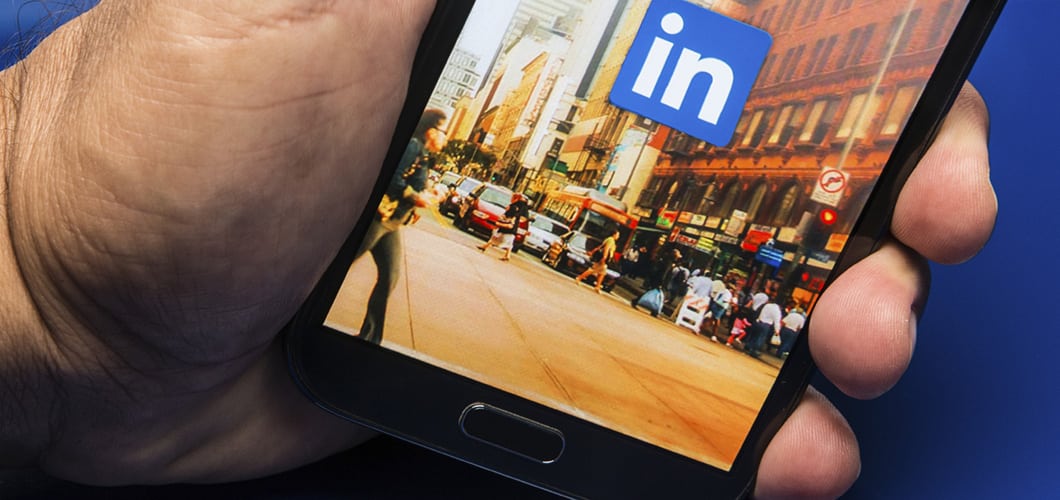“I always thought it was just an elaborate Rolodex for companies,” says the creator of the Magazine Creation Academy and editor of Life Is Short Magazine. “Then I saw stats on how LinkedIn has a much better conversion rate than Facebook and Twitter, so I took the plunge and joined an online LinkedIn course a month ago.”
Since then, Meleady has seen a marked increase in business. “As soon as I started taking advantage of the site, I saw instantaneous results, including being asked to appear on a podcast and to create a magazine. I’ve been active on Facebook nearly every day for the last five years and it never gave such results in such a short time-frame.”
Many small-business owners don’t realize how powerful LinkedIn is as a networking tool, says social media expert and LinkedIn evangelist Karen Yankovich. “According to a study done by Hubspot, LinkedIn is 277 percent more effective for lead generation than Facebook and Twitter,” she says. “Small-business owners are finding many benefits to connecting on the site. It provides an appropriate way to keep contacts warm in a professional, unobtrusive and authentic way.”
Your LinkedIn profile is being seen by people even if you’re ignoring it. “Your profile is the front door to your world. When people want to find out more about you, they’ll do so through your LinkedIn profile, because the site is ranked high by Google search algorithms. This provides a huge opportunity to make sure potential customers know exactly what you want them to know about you,” Yankovich says.
No matter what your industry, LinkedIn, which has 259 million registered members worldwide, has become today’s business card, agrees Risa Edelstein, director of marketing and retail product development for the family-owned company Echotape, a manufacturer of industrial tape. “I’ve found the best suppliers on LinkedIn, and use it to help make final hiring decisions and to check out my competitors,” says Edelstein, who introduced her company’s 70 employees to LinkedIn in February 2013, resulting in increased sales.
Want to start making LinkedIn’s networking power work for you?
1. Claim your expert status in your headline.
“LinkedIn gives you an ideal opportunity to highlight your areas of specialization with your headline,” says Yankovich, who notes that the headline is searchable by Google, so having your specialties clearly stated in your headline is critical.
2. Make your profile professional.
Include a business-like head shot of yourself, your email address, website or blog address and your Twitter handle. Claim your personalized URL with LinkedIn rather than the URL they assign you, if it’s available. And be thorough in your summary of your skills and expertise.
3. Make yourself searchable.
Sprinkle keywords throughout your profile regarding your areas of expertise, which will cause you to appear in online searches. If you specialize in tax law, make sure to use that and similar terms throughout your profile.
4. Build up your connections.
Unless you have a bad vibe about someone, Yankovich suggests accepting all invitations and sending them out on a regular basis. “The more connections you have, the greater the power of your network,” she says. “Your first degree connections have their own connections. It’s often in these second degree connections that you find valuable contacts.”
5. Ask for recommendations.
Recommendations on your LinkedIn page are like “social proof on steroids,” says Yankovich. “Giving and getting recommendations on the site is a great way to build up the trust factor between yourself and your connections and anyone who looks at your page. If someone praises your work, ask the person to write you a recommendation. Many people are happy to do so.”
Recommendations are not be confused with endorsements, which are also a useful feature on the site.
6. Reach out to contacts.
On a regular basis, Yankovich emails about 20 of her LinkedIn contacts by sending a thank you for connecting and offers herself as a resource. “Seven out of 10 times, they’ll reply to me and sometimes it will result in a phone call to see how we might help one another,” she says.
7. Add media.
Take advantage of the opportunity to share media on your profile page, such as blog posts, articles, Web pages and video. In addition to rewriting her summary a month ago, Meleady uploaded a YouTube tutorial and a few promotional videos, and feels that these efforts are the reason she experienced quick results.
8. Set up a company page.
“Personal profiles establish you as the expert, and company pages are where you can showcase all of your products and services,” Yankovich says. Include on the page a blurb about your company, as well as articles and photos.
9. Take advantage of groups.
A wide variety of groups exist on the site, offering you the opportunity to connect with like-minded individuals and forge valuable partnerships. Yankovich suggests active groups with 200 to 1,000 members. Look for groups where people are asking and answering questions and offering feedback about the topic.
A freelancer since 1985, Julie Bawden-Davis has written for many publications, including Entrepreneur, Better Homes & Gardens and Family Circle.
Read more articles on social media.
Photo: iStockphoto


